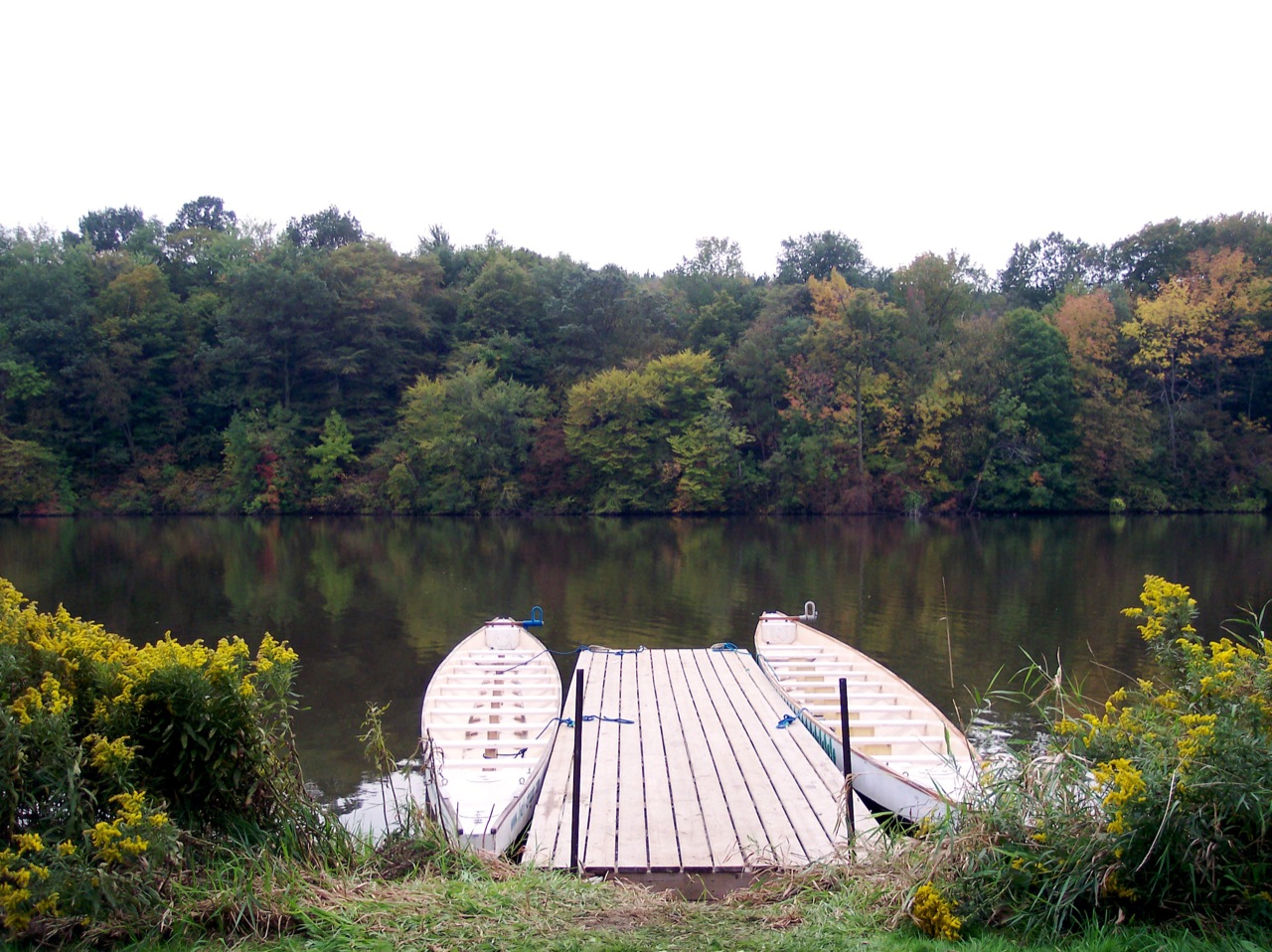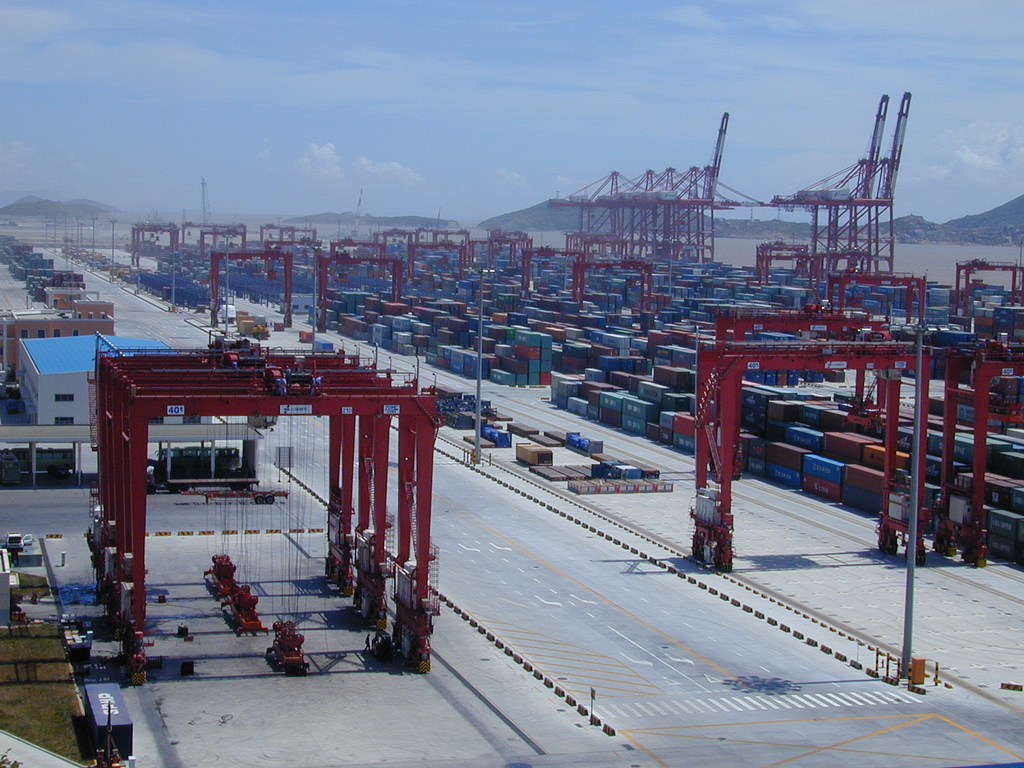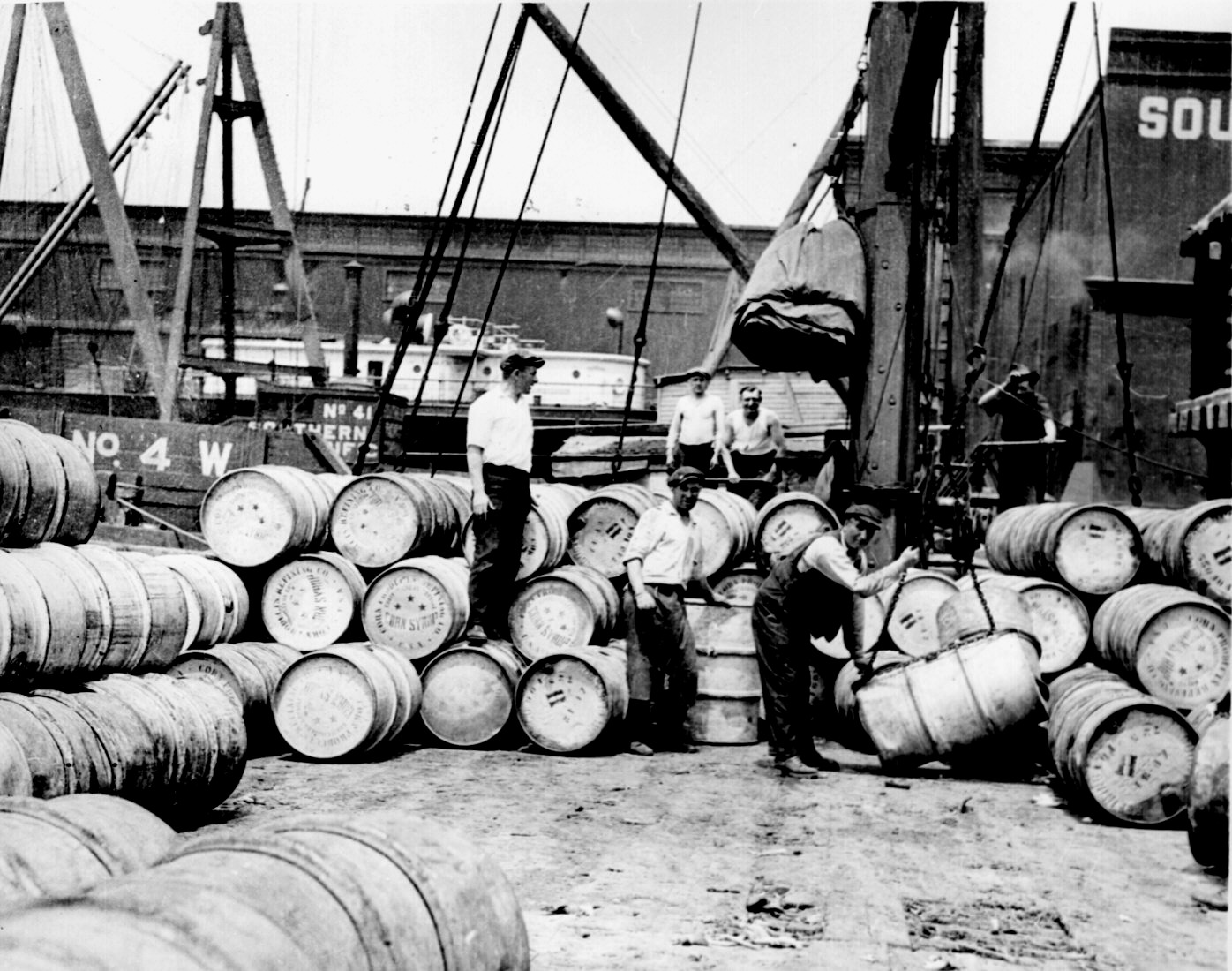|
Red Hook Container Terminal
The Red Hook Marine Terminal is an intermodal freight transport facility that includes a container terminal located on the Upper New York Bay in the Port of New York and New Jersey. The maritime facility in Red Hook section of Brooklyn, New York handles container ships and bulk cargo. The Port Authority of New York and New Jersey (PANYNJ) bought the piers in the 1950s when there was still much break bulk cargo activity in the port. The container terminal was built in the 1980s, There are two active container cranes along 2,080 feet berth, 3,140 feet of breakbulk berth space, two major bulk-handling yards, and approximately 400,000 square feet of warehouse. In October 2011 the PANYNJ took over operations at the site. In 2011, the terminal handled 110,000 containers. Red Hook Container Terminal LLC operates the terminal on the Port Authority's behalf in an agreement set to end in 2018. Nearly all labor on the terminal is supplied by Local 1814 of the International Longshoremans ... [...More Info...] [...Related Items...] OR: [Wikipedia] [Google] [Baidu] |
Berth (moorings)
A berth is a designated location in a port or harbour used for mooring vessels when they are not at sea. Berths provide a vertical front which allows safe and secure mooring that can then facilitate the unloading or loading of cargo or people from vessels. Locations in a port Berth is the term used in ports and harbors for a designated location where a vessel may be moored, usually for the purposes of loading and unloading. Berths are designated by the management of a facility (e.g., port authority, harbor master). Vessels are assigned to berths by these authorities. Most berths are alongside a quay or a jetty (large ports) or a floating dock (small harbors and marinas). Berths are either general or specific to the types of vessel that use them. The size of the berths varies from for a small boat in a marina to over for the largest tankers. The rule of thumb is that the length of a berth should be roughly 10% longer than the longest vessel to be moored at the berth. ... [...More Info...] [...Related Items...] OR: [Wikipedia] [Google] [Baidu] |
Rail Freight Transportation In New York City
Rail or rails may refer to: Rail transport *Rail transport and related matters * Rail (rail transport) or railway lines, the running surface of a railway Arts and media Film * ''Rails'' (film), a 1929 Italian film by Mario Camerini * ''Rail'' (1967 film), a film by Geoffrey Jones for British Transport Films *'' Mirattu'' or ''Rail'', a Tamil-language film and its Telugu dub Magazines * ''Rail'' (magazine), a British rail transport periodical * ''Rails'' (magazine), a former New Zealand based rail transport periodical Other arts *The Rails, a British folk-rock band *Rail (theater) or batten, a pipe from which lighting, scenery, or curtains are hung Technology * Rails framework or Ruby on Rails, a web application framework *Rail system (firearms), a mounting system for firearm attachments * Front engine dragster *Runway alignment indicator lights, a configuration of an approach lighting system *Rule Augmented Interconnect Layout, a specification for expressing guidelines for pr ... [...More Info...] [...Related Items...] OR: [Wikipedia] [Google] [Baidu] |
Container Terminals
A container port or container terminal is a facility where cargo containers are transshipped between different transport vehicles, for onward transportation. The transshipment may be between container ships and land vehicles, for example trains or trucks, in which case the terminal is described as a ''maritime container port''. Alternatively, the transshipment may be between land vehicles, typically between train and truck, in which case the terminal is described as an ''inland container port''. In November 1932, the first inland container port in the world was opened by the Pennsylvania Railroad company in Enola, Pennsylvania. Port Newark-Elizabeth on the Newark Bay in the Port of New York and New Jersey is considered the world's first maritime container port. On April 26, 1956, the Ideal X was rigged for an experiment to use standardized cargo containers that were stacked and then unloaded to a compatible truck chassis at Port Newark. The concept had been developed by the ... [...More Info...] [...Related Items...] OR: [Wikipedia] [Google] [Baidu] |
Ports And Harbors Of New York (state)
A port is a maritime facility comprising one or more wharves or loading areas, where ships load and discharge cargo and passengers. Although usually situated on a sea coast or estuary, ports can also be found far inland, such as Hamburg, Manchester and Duluth; these access the sea via rivers or canals. Because of their roles as ports of entry for immigrants as well as soldiers in wartime, many port cities have experienced dramatic multi-ethnic and multicultural changes throughout their histories. Ports are extremely important to the global economy; 70% of global merchandise trade by value passes through a port. For this reason, ports are also often densely populated settlements that provide the labor for processing and handling goods and related services for the ports. Today by far the greatest growth in port development is in Asia, the continent with some of the world's largest and busiest ports, such as Singapore and the Chinese ports of Shanghai and Ningbo-Z ... [...More Info...] [...Related Items...] OR: [Wikipedia] [Google] [Baidu] |
Geography Of New York-New Jersey Harbor Estuary
Geography (from Greek: , ''geographia''. Combination of Greek words ‘Geo’ (The Earth) and ‘Graphien’ (to describe), literally "earth description") is a field of science devoted to the study of the lands, features, inhabitants, and phenomena of Earth. The first recorded use of the word γεωγραφία was as a title of a book by Greek scholar Eratosthenes (276–194 BC). Geography is an all-encompassing discipline that seeks an understanding of Earth and its human and natural complexities—not merely where objects are, but also how they have changed and come to be. While geography is specific to Earth, many concepts can be applied more broadly to other celestial bodies in the field of planetary science. One such concept, the first law of geography, proposed by Waldo Tobler, is "everything is related to everything else, but near things are more related than distant things." Geography has been called "the world discipline" and "the bridge between the human and t ... [...More Info...] [...Related Items...] OR: [Wikipedia] [Google] [Baidu] |
South Brooklyn Marine Terminal
The South Brooklyn Marine Terminal (SBMT) is an intermodal shipping, warehousing, and manufacturing complex in the Port of New York and New Jersey. It is located along the Upper New York Bay, between 29th and 39th Streets in the Sunset Park and Greenwood Heights neighborhoods of Brooklyn, New York City. The site is adjacent to Bush Terminal and Industry City, which respectively lie directly to the south and east. A recycling and waste transfer facility managed by Sims Metal Management is the major tenant. In May 2018, the city contracted partners to activate the largely unused terminal. Early ferry service The New York and South Brooklyn Ferry operated a ferry from the Battery Maritime Building (formerly known as Municipal Ferry Pier) to the South Brooklyn/39th Street Ferry Terminal, where rail transfer (to the South Brooklyn Railway) was possible until 1935. Formerly, a Staten Island Ferry route ran between the ferry slip at 39th Street within Bush Terminal, and the St ... [...More Info...] [...Related Items...] OR: [Wikipedia] [Google] [Baidu] |
Port Newark-Elizabeth Marine Terminal
A port is a maritime facility comprising one or more wharves or loading areas, where ships load and discharge cargo and passengers. Although usually situated on a sea coast or estuary, ports can also be found far inland, such as Hamburg, Manchester and Duluth; these access the sea via rivers or canals. Because of their roles as ports of entry for immigrants as well as soldiers in wartime, many port cities have experienced dramatic multi-ethnic and multicultural changes throughout their histories. Ports are extremely important to the global economy; 70% of global merchandise trade by value passes through a port. For this reason, ports are also often densely populated settlements that provide the labor for processing and handling goods and related services for the ports. Today by far the greatest growth in port development is in Asia, the continent with some of the world's largest and busiest ports, such as Singapore and the Chinese ports of Shanghai and Ningbo-Zh ... [...More Info...] [...Related Items...] OR: [Wikipedia] [Google] [Baidu] |
Port Jersey Marine Terminal
Port Jersey, officially the Port Jersey Port Authority Marine Terminal and referred to as the Port Jersey Marine Terminal, is an intermodal freight transport facility that includes a container terminal located on the Upper New York Bay in the Port of New York and New Jersey. The municipal border of the Hudson County cities of Jersey City and Bayonne runs along the long pier extending into the bay. The facility was created between 1972 and 1976 and acquired by the Port Authority of New York and New Jersey in July 2010. Its major tenant is GCT Bayonne, a post-panamax shipping facility operated by Global Container Terminals. GCT Bayonne has been modernized. In May 2013 a 900 foot (270m) berth extension was completed, increasing the total dock face to 2,700 feet (820m) of contiguous berth, allowing the facility to handle the latest Suez Max vessels. Much of Port Jersey is part of United States Foreign-Trade Zone 49. Most of the area in and around the facility is restricted, thoug ... [...More Info...] [...Related Items...] OR: [Wikipedia] [Google] [Baidu] |
Howland Hook Marine Terminal
The Howland Hook Marine Terminal, operating as ‘’’GCT New York,’’’ is a container port facility in the Port of New York and New Jersey located at Howland Hook in northwestern Staten Island, New York City. It is situated on the east side of the Arthur Kill, at the entrance to Newark Bay, just north of the Goethals Bridge and Arthur Kill Vertical Lift Bridge. Built by American Export Lines. The site originally housed a B & O coal dumper, which was completed in 1949. The facility had a capacity of 100 cars per eight-hour shift. The dumped coal was delivered via barge to utilities in the harbor. It was in the process of being dismantled by Summer 1965. The terminal was purchased in 1973 by New York City for $47.5 million. In 1985, the Port Authority of New York and New Jersey leased the terminal from the city for a period of 38 years. The Port Authority of New York and New Jersey currently contracts Global Container to operate a container terminal on the site. Th ... [...More Info...] [...Related Items...] OR: [Wikipedia] [Google] [Baidu] |
Brooklyn Cruise Terminal
The Brooklyn Cruise Terminal is a cruise terminal in the Red Hook neighborhood of Brooklyn, New York City. The terminal is and sits on Buttermilk Channel, a tidal strait separating Brooklyn from Governors Island. It is located on land owned by the Port Authority of New York and New Jersey (PANYNJ) and leased by the New York City Economic Development Corporation (NYCEDC). The terminal is one of three terminals for ocean-going cruise ships in the New York metropolitan area. Ships from Carnival Corporation (which owns the Cunard and Princess Cruises) call the terminal their home port. The Brooklyn Cruise Terminal is located at Red Hook Pier 12, on the south side of the Atlantic Basin at Pioneer and Imlay Streets. Vehicular access is through the main gate near the intersection of Bowne and Imlay Streets. The terminal was converted from a 1954 freight terminal and was earlier the site of the Atlantic Basin Iron Works. The Brooklyn Cruise Terminal opened on April 15, 2006, f ... [...More Info...] [...Related Items...] OR: [Wikipedia] [Google] [Baidu] |
Break Bulk Cargo
In shipping, break-bulk, breakbulk, or break bulk cargo, also called general cargo, refers to goods that are stowed on board ship in individually counted units. Traditionally, the large numbers of items are recorded on distinct bills of lading that list them by different commodities. This is in contrast to cargo stowed in modern intermodal containers as well as bulk cargo, which goes directly, unpackaged and in large quantities, into a ship's hold(s), measured by volume or weight (for instance, oil or grain). The term ''break-bulk'' derives from the phrase breaking bulk, a term for unloading part of a ship’s cargo, or commencing unloading the cargo. Ships carrying break-bulk cargo are often called general cargo ships. Break-bulk/general cargo consists of goods transported, stowed and handled piecemeal to some degree, typically bundled somehow in unit loads for hoisting, either with cargo nets, slings, or crates, or stacked on trays, pallets or skids. Furthermore, batches ... [...More Info...] [...Related Items...] OR: [Wikipedia] [Google] [Baidu] |








